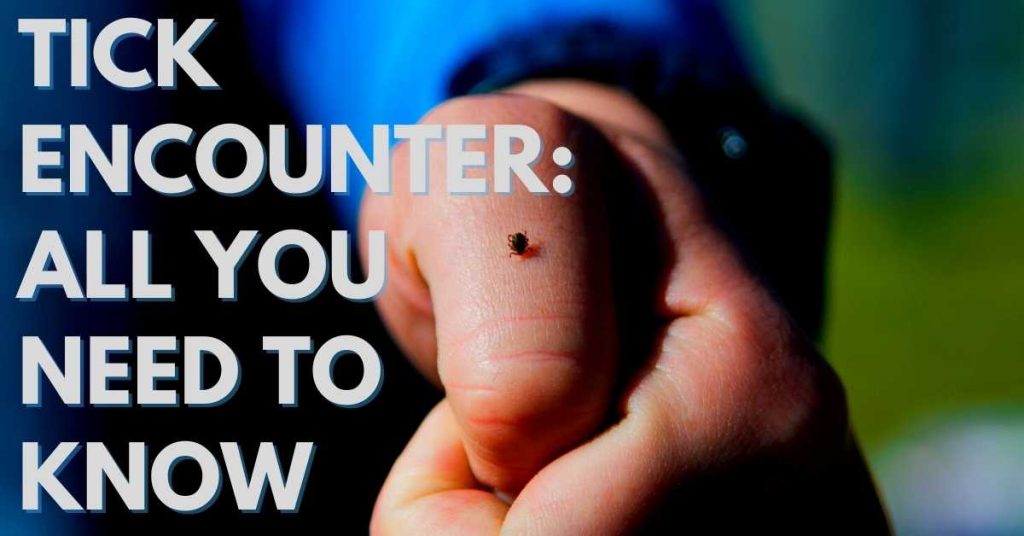
Summer is finally here, which means it’s time to enjoy the outdoors! However, it’s also important to be aware of the dangers of ticks. Ticks are small, eight-legged insects that feed on the blood of mammals, birds, and reptiles. They can transmit several serious diseases, including Lyme disease, Rocky Mountain spotted fever, and tularemia.
The best way to protect yourself from ticks is to learn how to recognize them and take precautions to avoid them.
Learn To Encounter Ticks
Although ticks are usually found in wooded or grassy areas, they can also be found in urban areas. Ticks are especially active in the spring and summer months. There are many different types of ticks, but the most common ones are the deer tick, the dog tick, and the brown tick.
While not fully foolproof, detecting the adult stages’ unusual colors and size makes them rather straightforward to recognize. The immature stages are sometimes so little that even seeing the tick, let alone recognizing its unique qualities, can be difficult. To see specific traits on adult ticks, you’ll need at least a 3X magnifying glass, and you might need the same magnification merely to see the immature stages. It’s recommended to magnify the tick at least 10 to 30 times its normal size to have a good look.
If you detect a tick attached to your skin, use a pair of tweezers to grasp it firmly at the base and gently pull it out. Avoid crushing or squeezing the tick’s body, which could release harmful bacteria into your bloodstream. Cleanse your hands and the affected area with soap and water afterward. With a bit of knowledge and caution, you can enjoy the outdoors without worrying about ticks.
How You May Come In Contact With Ticks?
Although ticks are most commonly found in wooded or brushy areas, they can also live in tall grasses and even indoors. Ticks are active mostly during the spring and summer months, but they can be a problem year-round in some parts of the country. There are several ways that people can come in contact with ticks, including:
- Walking, cycling, or hiking in wooded or brushy areas
- Participating in outdoor activities such as camping, hunting, fishing, or gardening
- Coming into contact with infected animals, such as rodents, deer, dogs, or cats
- Working in an occupation that puts you at risk for exposure, such as forestry, farming, or landscaping
If you live in a tick-prone area, it’s important to take precautionary steps to protect yourself from these dangerous creatures.
Safety Measures During Tick Encounters
While most ticks are harmless, some can carry disease, so it’s important to take precautions when spending time in areas where they may be present. Here are some tips for avoiding tick bites:
- Wear light-colored clothing to spot ticks more easily;
- Wear long-sleeved shirts and long pants to reduce the amount of exposed skin;
- Use an insect repellent that contains DEET;
- Check your body for ticks after being in other habitats or outdoors; and
- Remove ticks promptly if you find them.
- Put your clothing in the dryer and set it on at high temperatures for at least 20 minutes after being outdoors to kill the ticks, if any are attached.
- Try to stay on cleared paths when hiking or walking in the woods.
- Make your yard an inhospitable place for ticks. Clear out leaf litter and brush around the house, trimming it down to 2 inches in height so there are no hiding spots where pests can enter through cracks between foundation stones or gaps under doors, and keep shrubs/bushes neatly trimmed. Have a licensed pest control professional spray pesticides around the perimeters of the yard.
By following these simple guidelines, you can help reduce your risk of being bitten by a tick.
Add Tick Check In Daily Routine
There has been a surge in tick-borne illnesses in recent years. The good news is that most tick species can be removed quickly, preventing the spread of tick-borne illnesses. Nymphal deer ticks require more than 24-36 hours to transfer Lyme disease bacteria and much longer transmit Babesia parasites. Unlike tick-transmitted viruses, pathogen transmission delays after tick attachment are rather normal.
While there is no assured way to prevent tick bites, you can take a few steps to reduce your risk.
- First, check yourself and your children for ticks each day, especially if you’ve been outdoors in a wooded or grassy area.
- Pay close attention to any areas where clothing is tight against the skin, such as the waistline, armpits, and groin.
- If you notice a tick, use tweezers to remove it as soon as possible.
- Chemically-treated clothing and the use of DEET on the skin are two more tools that you can add to your tick protection plans.
- It would help if you talked to your doctor about using tick repellents and investing in a good pair of tick-proof boots or socks.
- Be sure to check your pets, as they can also serve as hosts for ticks.
- Keep your lawn mowed and trimmed, remove leaf litter and other debris, and make sure there is no standing water on your property.
Following these precautions can help you avoid becoming a victim of this serious menace. It is best to have a tick checklist if you are going on an outdoor adventure.
Know Tick Habitats
Ticks of various species and stages have distinct host relationships and environmental needs. It implies they’re likely to be found in multiple locations around the landscape, with encounter rates varying substantially. Ticks are most afraid of drying out, and some are more sensitive than others. Adult stages may move higher on vegetation to latch on to their hosts, whereas immature stages (larvae and nymphs) are more abundant in leaf litter. Ticks like to hang around on shady edges.
Hence, it’s vital to exercise caution in the following areas.
- Tall grasses
- Shrubs
- Fallen and low-hanging branches
- Wooded areas
- Logs
- Stone walls or other types of structures that can retain moisture
- Leaf, wood, debris, or litter piles in your yard
To avoid being bitten by a tick, it’s important to know where they’re typically found. When possible, stay out of areas that are known to harbor ticks. If you must venture into tick territory, be sure to wear long pants and sleeves and conduct a thorough tick check after spending time outdoors. By taking these precautions, you can help to reduce your risk of being bitten by a tick.
The Takeaway
Start to practice control measures to keep yourself and your family safe when outdoors. Be sure to:
- Wear long pants tucked into socks when hiking or walking in the woods
- Avoid walking barefoot or sitting on the ground in areas where ticks are common
- Use a tick repellent with DEET on exposed skin and clothing
- Check for ticks daily, especially after spending time outdoors
- Shower soon after coming indoors to wash off any unattached ticks
- Check your pets as well for ticks
If you detect a tick on your body:
- Using fine-tipped tweezers, grasp the tick as close to the skin’s surface as possible and pull the tick away upward with steady, even pressure.
- Try not to twist or jerk the tick; this can cause the mouthparts to break off and remain in the skin.
- If you cannot remove the tick yourself, contact a healthcare professional.
- After removing the tick, clean the bite site and your hands with rubbing alcohol or soap and water.
- Frequently check the bite site for signs of infection, such as redness, swelling, or warmth. If you develop these symptoms, see a healthcare professional right away.
Early diagnosis and treatment may help prevent complications. If you are unable to recognize the tick that bit you, place the tick in a plastic bag with a zip lock so that you can show it to your doctor in case you develop symptoms.
With a little bit of vigilance, you can enjoy the outdoors without worrying about tick encounters. Stay safe!


